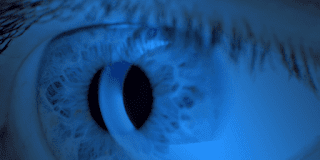Júpiter en Oposición🌃
Nuestro vecino más grande se acerca a nosotros
a gran velocidad. El próximo 10 de Junio Júpiter y nuestro planeta estarán a la
menor distancia relativa entre ambos cuerpos.
Al tratarse de un planeta exterior a nuestra orbita alrededor del Sol,
cada año se produce esta efeméride.
Our
biggest neighbor approaches us at great speed. Next June 10 Jupiter and our
planet will be at the least relative distance between both bodies. As it is a
planet outside our orbit around the Sun, every year this ephemeris takes place.
Júpiter tarda casi 12 años en completar su
translación alrededor del Sol, la gran diferencia en duración con la nuestra
propicia oposiciones más favorables que oscilan en ciclos definidos. Debido a
la escasa excentricidad de Júpiter solo difiere 0.5UA entre su afelio y
perihelio, la combinatoria de la excentricidad de ambos cuerpos nos permite disfrutar de oposiciones donde
Júpiter llega a alcanzar los 50 segundos de arco. Este año el disco planetario
tendrá una tamaño de 47.5’’ y habrá que esperar hasta 2.022 para alcanzar el
máximo tamaño, que llegará a los 49.8’’. Júpiter es el planeta de nuestro del
sistema solar con el mayor diámetro aparente que podemos observar.
Nuestro planeta rey es un gigante de gas cuya
atmosfera está formada en su mayoría de hidrógeno (87 %) y helio (13 %), pero
además contiene metano, vapor de agua, amoníaco y sulfuro de hidrógeno y todas
estas con < 0,1 % de la composición de la atmósfera total. Al igual que el
Sol, la rotación de su capa superficial sufre rotación diferencial, esto
significa que las latitudes ecuatoriales rotan a mayor velocidad que las
latitudes polares. La rotación media del cuerpo
es de 9 horas 55 minutos, causa de ello es la necesidad de diferenciar
tres regiones del disco plantario con la identificación CM (Central Meridian),
en este caso existen CM1, CM2 y CM3.
Jupiter takes almost 12 years to complete its translation
around the Sun, the great difference in duration with our propitious more
favorable oppositions that oscillate in defined cycles. Due to the low
eccentricity of Jupiter only differs 0.5UA between its aphelion and perihelion,
the combinatorial eccentricity of both bodies allows us to enjoy oppositions
where Jupiter reaches 50 seconds of arc. This year the planetary disk will have
a size of 47.5 '' and we will have to wait until 2022 to reach the maximum
size, which will reach 49.8 ''. Jupiter is the planet of our solar system with
the largest apparent diameter that we can observe.
Our planet king is a gas giant whose atmosphere is formed
mostly of hydrogen (87%) and helium (13%), but also contains methane, water
vapor, ammonia and hydrogen sulfide and all these with <0.1 % of the
composition of the total atmosphere. Like the Sun, the rotation of its surface
layer undergoes differential rotation, which means that the equatorial
latitudes rotate at a faster rate than the polar latitudes. The average
rotation of the body is 9 hours 55 minutes, which is why it is necessary to
differentiate three regions of the plantar disc with the CM identification
(Central Meridian), in this case there are CM1, CM2 and CM3.
La oposición es el momento clave para disfrutar
tanto a nivel visual como fotográfico de la riqueza de detalles de la atmósfera
superior de Júpiter. Disfrutar de la gran mancha roja y resolver detalles de
las bandas ecuatoriales se hace más accesible. Ocurren otros fenómenos muy
interesantes que ponen de manifiesto el dinamismo de nuestro sistema solar,
como eclipses entre Júpiter y sus lunas y apariciones de las lunas tras su
paneta son fácilmente predecibles gracias a software que simulan el sistema
Joviano. Ya sabes, el próximo 10 de Junio a las 00:25UTC lo encontraras en su máximo
acercamiento colocado entre Sagitario, Escorpio y Ofiuco.
The opposition is the key moment to enjoy both the visual
and photographic level of the richness of details of the upper atmosphere of
Jupiter. Enjoy the great red spot and resolve details of the equatorial bands
becomes more accessible. There are other very interesting phenomena that show
the dynamism of our solar system, as eclipses between Jupiter and its moons and
the appearance of the moons after its paneta are easily predictable thanks to
software that simulates the Jovian system. You know, next June 10 at 00: 25UTC
you will find it in its maximum approach placed between Sagittarius, Scorpio
and Ophiuchus
No dudes en sacar tu equipo y disfrutar de este
fenómeno. Nosotros esperamos disfrutar de la oportunidad para capturar este
magnífico cuerpo que nunca defrauda. Síguenos para estar al tanto de los
resultados. Puedes acceder a todo el contenido que desees de nuestro Blog. Un saludo y cielos depejados....
Astrofotografias, equipo y tutoriales en los link siguientes:
- Nuestros trabajos con Júpiter
- Equipo que utilizamos para obtener las astrofotografias
- Tutoriales de procesado para obtener los mejores resultados
Do not hesitate to take
out your equipment and enjoy this phenomenon. We hope to enjoy the opportunity
to capture this magnificent body that never disappoints. Follow us to be aware
of the results. You can access all the content you want from our Blog.
Greetings and skies ...
Astrofotografias, equipo y tutoriales en los link siguientes:
- Nuestros trabajos con Júpiter
- Equipo que utilizamos para obtener las astrofotografias
- Tutoriales de procesado para obtener los mejores resultados
Astrophotography, equipment and tutorials in the
following links:













Comentarios
Publicar un comentario